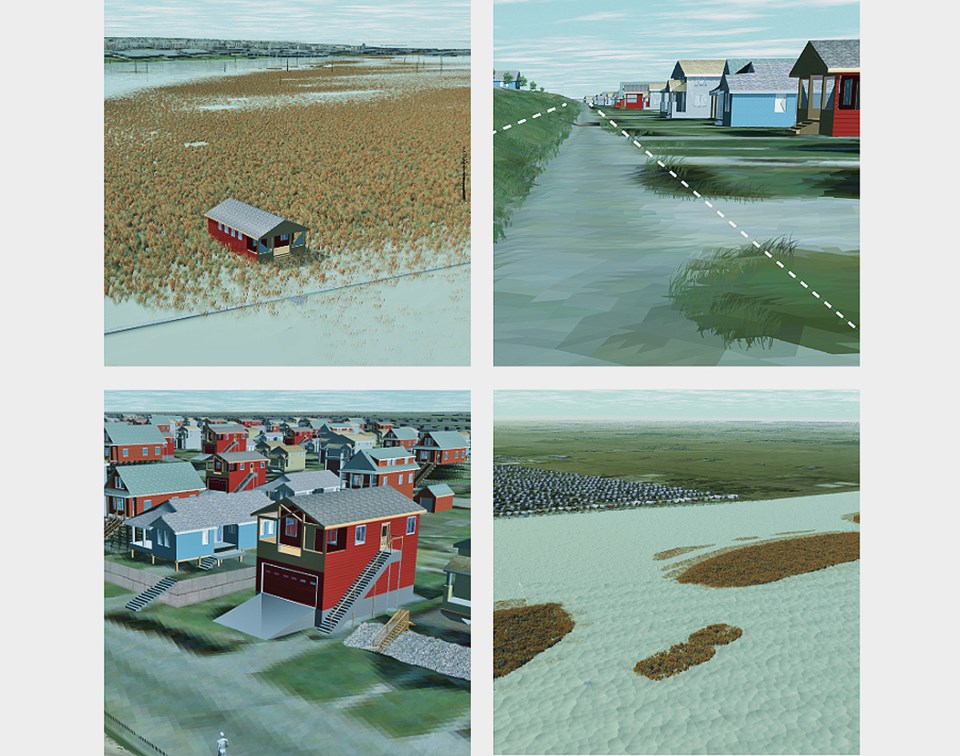The City of Delta is hoping to land major federal dollars to construct dike improvements along Boundary Bay in Ladner.
A grant application has been submitted to the Investing in Canada Infrastructure Program's COVID-19 Resilience Infrastructure Stream's Adaptation, Resilience and Disaster Mitigation Program for funding for the improvements.
The grant provides up to $10 million for projects which must begin construction no later than Sept. 30, 2021. The project costs are 80 per cent funded by the Government of Canada and 20 per cent funded by the Province of B.C.
If successful, the major project would see upgrades from the area around 72nd Street all the way to just past 112th Street.
The city has applied for the maximum amount of money in order to raise the dike elevation to the 2050 flood design level of 4.1 metres and implement seismic improvements along the Boundary Bay dike.
Delta's Flood Management Strategy identifies a number of locations for possible dike upgrading over the next decade.
With climate change, sea level rise is a significant threat for the lowlands of Delta, especially along Boundary Bay, according to a City of Delta staff report, adding the existing coastal dikes are at an elevation of 3.5 metres and currently do not adhere to the province's seismic guidelines.
Council last fall also agreed to apply for funding through the Community Emergency Preparedness Fund, provided by the B.C. government to the Union of BC Municipalities. It’s a $31-million pot of money to support disaster planning, response and recovery.
Delta applied for several streams of funding that are available including one for flood risk assessment, flood planning and flood mitigation planning.
A maximum of $150,000 is available to successful applicants for that stream.
City staff note it’s to ensure Delta has accurate knowledge of the city's flood hazards and to develop effective strategies to mitigate and prepare for associated risks.
However, Coun. Lois Jackson told the Optimist she believes the time for studies is over.
While the city has been successful in securing senior government dollars for various projects in the last few years, the city and other communities at risk of flooding need to secure a commitment for a much-needed long-term plan to upgrade the dike system.
Saying many studies have already been undertaken and there’s a clear picture of the risk, as well as what needs to be done, Jackson noted the bill will end up in the hundreds of millions and perhaps billions.
“We’ve been doing this for many years and we’re very good with dikes and drainage. There’s tonnes of studies we have done and it bothers me that we are going to spend a whole whack of money on studies when it’s been studied to death, not only by the National Geological Society, but by Delta and engineers and others. It really is a shame it’s going to be on the back burner that they’ll study it more but not put the money into it and it should be better spent,” said Jackson.
A report to council two years ago noted the goal by 2050 is to raise the dikes in a phased project that will take years to complete.
The report states preliminary cost estimates for the first phase indicate that dike upgrades to 2050 could cost more than $350 million, excluding extensive seismic upgrading.
Seismic upgrading could cost an additional $300 million.
Meanwhile, dike statutory rights-of-way that parallel the existing dike will need to be acquired with acquisition costs estimated to be around $10 million.



